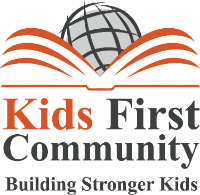Child neglect is defined as continued failure to provide care and attention for a child’s needs (EX: food, clothing, shelter, medical care, education, love or protection from physical or emotional harm). Neglect is the most common type of child maltreatment.
Types of child neglect
-Physical neglect: the child’s life or physical wellbeing is in danger because of insufficient food, water, shelter, or supervision (malnutrition, abandoned kids, physical injuries because child isn’t supervised etc.)
-Emotional (psychological) neglect: failure to provide for a child’s emotional, psychological, and mental health or constant exposure to traumatizing situations (verbal assaults, belittling, ignoring, withholding love and support, rejection, threatening, exposing child to continuous parental fights or domestic violence, etc.)
-Medical neglect: failing to provide for a child’s physical or psychological medical needs (parents disregarding health care for children’s acute or chronic medical conditions)
-Educational neglect: not providing kids with appropriate mandatory education (not enrolling child in school, not providing adequate home schooling or special education for disabled kids, or allowing kids to drop out of mandatory school)
Statistics on child neglect
-In the United States, 63% of all reported child abuse cases are neglected children. That’s approximately 570,000 kids per year
-Nearly 1 out of 10 children are neglected
-Around 1300 kids die each year from severe neglect, 70 % of them are under the age of 4
-About 30% of neglect victims, once they grow up, will continue the cycle of abuse with their own children
-Average annual cost of child abuse and neglect is around $124 billion
Risk factors – what makes parents neglect their children?
It occurs in families regardless of their financial status, race, age, or culture. However, parents who are more likely to neglect their kids usually are:
-abuse survivors themselves (have suffered some form of abuse during their childhood and are repeating behavior pattern)
-unable to cope with emotional distress or stressful life events
-suffering from some form of psychological disorder (anxiety, depression, etc) or drug/alcohol abuse
-single parents overwhelmed with harsh living conditions (poverty, unemployment, underpaid jobs, living in inadequate homes)
-insufficiently educated about healthy child development
Children who are more at risk of being neglected usually are:
-with mental or physical disabilities or chronic illnesses (parents experience continuous stress and are more likely to suffer from depression, aggression, or substance abuse)
-kids in foster homes
-younger children (need more care and are less able to understand discipline or good behavior which can be exhausting for parents who already suffer from emotional instability or distress)
Warning signs and symptoms – how to recognize if a child is being neglected?
People who spend more time with kids (family friends, relatives, neighbors) and know them more personally are more likely to recognize child neglect than professionals (family doctors or teachers). This is because neglected kids learn how to lie and pretend all is well at home, hiding the true situation. This is especially true when parents are incapable of caring for their kids, so kids take over the parental role (EX: when parents suffer from mental illnesses, substance abuse – kids are afraid they will be taken away, or blame themselves if parents suffer legal consequences for abuse).
Sometimes we can see warning signs which may indicate a child is being neglected:
-malnutrition, thin body with swollen stomach
-poor personal hygiene
-skin rashes, flea bites, infected untreated skin injuries
-inadequate clothing (short sleeves or no coats when it’s cold)
-withdrawal, problems with socializing and making friends
-aggression, bullying other students or peers, missing school
-drugs or alcohol abuse
-difficulties in learning or paying attention during classes
Severe consequences – what are effects of child neglect?
Consequences depend on many things: a child’s personal characteristics, age and health, duration and intensity of maltreatment, etc. Effects of child neglect can be mild (easier to overcome and continue with normal living) or severe (life threatening or irreparable damage lasting for a lifetime).
Inadequate nutrition, health care, or supervision can endanger a child’s life and lead to physical or psychological disabilities, serious chronic diseases, fatal injuries, or death.
Neglected infants are more likely to suffer from problems with brain development, speech, or coordination.
Neglected kids are at high risk from developing depression, anti-social behavior, panic disorder, post-traumatic disorder; they often engage in high risk behavior at an early age (drugs, alcohol, early sexual intercourse, teen pregnancy, drunk driving) and keep having problems with authorities, police, and the law. It prevents them from having healthy relationships and successful professional careers which only creates additional stress, low self-esteem, insecurity, and disappointment. This creates a circle of long-term consequences, suffering even more.
Prevention of child neglect – what can you do?
If you suspect child is being neglected, you should call the local police or child or family protective service agencies. Even when you have reasonable suspicion, but aren’t sure if a child is abused, you should ask for advice from trained professionals who will assess the situation, make sure you are not at risk, and provide both the child and parents with adequate help and support.







